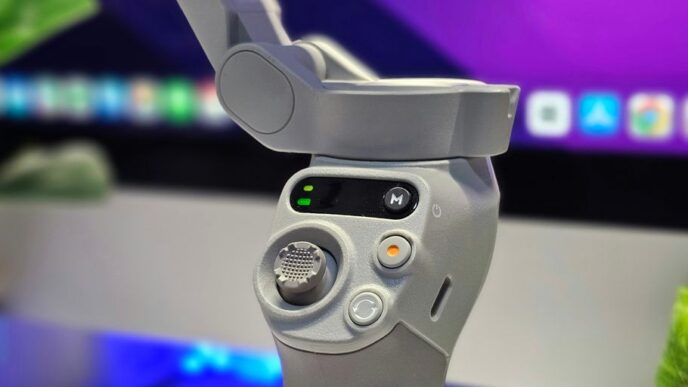Education is at the heart of Bengaluru’s thriving intellectual and technological landscape. With an increasing focus on smart classrooms and innovative teaching methods, educators and administrators are debating a crucial question: Should schools continue using traditional blackboards, or is it time to embrace the interactive flat panel in Bengaluru classrooms? Both tools have their merits, but in an era of rapid digital transformation, the way students learn is evolving.
So, which is better for Bengaluru’s schools? Let’s dive into a comparison to understand how each tool impacts teaching, learning, and student engagement.
The Traditional Blackboard: A Timeless Teaching Tool
For decades, blackboards have been an integral part of classrooms worldwide. They offer a simple yet effective way for teachers to explain concepts, illustrate ideas, and engage students in written exercises.
Advantages of Traditional Blackboards:
- Simplicity and Accessibility – Blackboards don’t require electricity or an internet connection. Teachers can use chalk to write, erase, and modify lessons without worrying about technical failures.
- Cost-Effective – Schools, especially in underprivileged areas, benefit from blackboards’ affordability compared to advanced technology.
- Encourages Handwriting Practice – Writing on blackboards enhances students’ focus and reinforces handwriting skills, which is essential in early education.
- Durability – Blackboards last for years with minimal maintenance costs.
Challenges of Traditional Blackboards:
- Limited Engagement – Passive learning is a major concern. Students often struggle to visualize complex concepts when lessons are confined to chalk and board.
- No Multimedia Support – Subjects like science and mathematics require dynamic explanations, which blackboards cannot provide.
- Time-Consuming – Writing lengthy explanations manually can take up valuable classroom time, reducing the opportunity for discussions and student interaction.
The Rise of Interactive Flat Panels in Bengaluru’s Schools
With the introduction of interactive flat panels in Bengaluru, schools are embracing the future of education. These high-resolution, touch-enabled digital screens function as smart whiteboards, providing an interactive and engaging learning experience.
Advantages of Interactive Flat Panels:
- Enhanced Student Engagement – Unlike blackboards, interactive flat panel in Bengaluru classrooms allow students to interact with the screen, solving problems, drawing, and engaging in real-time collaboration.
- Multimedia Integration – Teachers can incorporate videos, animations, and simulations to explain complex topics. A physics teacher can demonstrate Newton’s laws with 3D animations rather than just writing formulas on the board.
- Real-Time Collaboration – Students can connect their devices to the panel and work on group projects, brainstorm ideas, and analyze data together.
- Time Efficiency – Pre-loaded lesson plans, cloud storage, and digital annotations save time compared to manually writing on blackboards.
- Supports Remote Learning – In the post-pandemic world, hybrid learning is the new norm. Interactive flat panels enable seamless virtual classrooms by integrating with online learning platforms.
- Eco-Friendly – Unlike chalkboards, which require constant use of chalk (which generates dust), interactive flat panels are a sustainable alternative.
Challenges of Interactive Flat Panels:
- Higher Initial Investment – The cost of purchasing and installing interactive flat panels is higher than traditional blackboards.
- Training Requirements – Teachers may require training to make full use of the panel’s capabilities.
- Dependency on Power and Internet – Unlike blackboards, interactive flat panels require electricity and internet access, which may be a challenge in some schools.
Bengaluru Schools Leading the Digital Transition
Several progressive schools in Bengaluru are already integrating interactive flat panels in Bengaluru classrooms, and the results are promising.
Case Study 1: A Smart School in Whitefield
A leading school in Whitefield adopted interactive flat panels in its science and mathematics departments. Teachers reported increased student engagement and improved test scores, particularly in subjects that required visual understanding. The ability to conduct virtual experiments helped students grasp abstract concepts with ease.
Case Study 2: A Public School in Jayanagar
A government school in Jayanagar introduced interactive flat panel in Bengaluru classrooms through a state-funded initiative. Students who previously struggled with passive learning methods found lessons more enjoyable and interactive. Teachers also noted a decrease in absenteeism as students were more excited about attending class.
The Verdict: Which is Better for Bengaluru’s Schools?
While blackboards remain a fundamental tool, the benefits of interactive flat panels far outweigh their limitations in today’s digital learning landscape. Bengaluru, being an innovation hub, is an ideal city to lead the charge in educational technology adoption.
When to Use Blackboards:
- In rural or underprivileged schools where digital infrastructure is lacking.
- For quick, on-the-fly explanations that don’t require multimedia.
- To reinforce handwriting and traditional problem-solving skills.
Why Schools Should Consider Interactive Flat Panels:
- 21st-Century Skill Development – Prepares students for a tech-driven world by integrating AI, coding, and interactive problem-solving.
- Personalized Learning – Enables teachers to cater to different learning styles (visual, auditory, and kinesthetic learners).
- Bridging the Digital Divide – Many educational organizations and government programs are offering funding for technology integration in schools.
The Road Ahead for Bengaluru’s Schools
The adoption of interactive flat panels in Bengaluru is a step towards the future of education. While transitioning from blackboards to digital panels requires investment and training, the long-term benefits outweigh the challenges. With the city’s strong IT ecosystem and increasing focus on ed-tech, more schools will likely implement this technology in the coming years.
As Bengaluru continues to be a frontrunner in technological advancements, its education sector must align with the changing times. Interactive flat panels are not just replacing blackboards; they are transforming the very foundation of how students learn, think, and innovate.
Final Thoughts
The debate between blackboards and interactive flat panels is not just about tradition vs. technology—it’s about what best serves today’s students. As Bengaluru moves towards a smarter, digitally enhanced educational future, schools must embrace the tools that empower students with interactive and engaging learning experiences.
The future of education is digital, and interactive flat panels in Bengaluru are leading the way. Whether it’s a physics lesson, a history discussion, or a group coding project, these panels are shaping a new era of learning that is inclusive, immersive, and future-ready. It’s time for Bengaluru’s schools to make the shift and prepare students for a world where technology and education go hand in hand.













